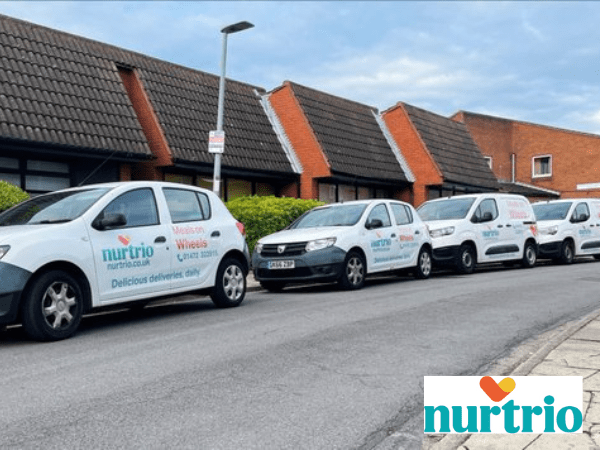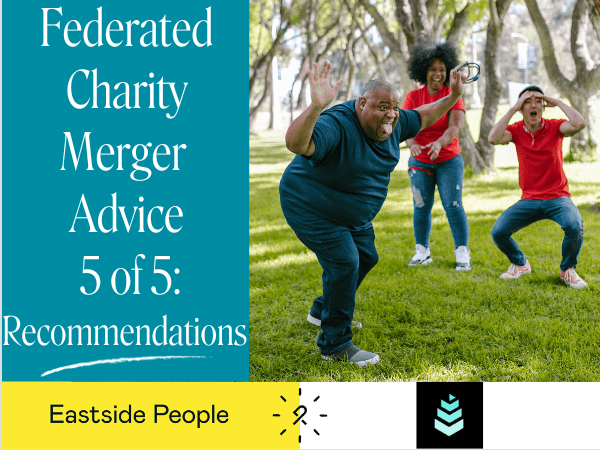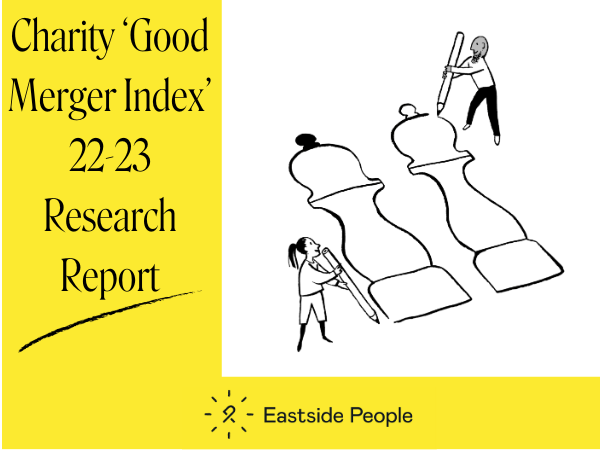Charity merger advice – should you consider merging a charity?
By Cara Evans, Head of Partnerships and Mergers at Eastside People, the consultancy specialising in services for charities and not-for-profit organisations.
I was extremely nervous about wading into the current debate about charities that are struggling, and about giving advice on whether or how to merge charities, but a few things have happened recently that have made me think life is too short not to say anything when what you have to offer may help. We have all seen the heartbreaking stories in the news. Third Sector says that it has reported more closures in the charity sector in the past six months than it has in the last six years. An alarming statement when one considers its implications.
You may also have seen the blogs and posts that have heavily criticized CEOs and Trustees who have been involved in these closures. This is not fair. There is not one simple reason why these closures are happening and there is not one simple solution. Blaming and criticizing is not helpful in this situation; learning, supporting, and focusing on solutions is.
I wanted to write this blog to help. I always tell every team I have worked with that there is always a solution, sometimes we might not like it, but it will be there.
I was in a situation back in the mid-2000s when I took on an interim CEO role for a small charity (HemiHelp), which became a permanent position. The financial situation was dire and within my first two months key decisions needed to be made to ensure a continuation of services. We reduced costs, launched an emergency appeal, and reviewed all options. We reduced staff to two part-time roles working from home as we were unable to afford an office. We delivered a core service while we negotiated a takeover by another charity Contact. That charity still exists today and within a year, we reached a third more beneficiaries at a third less of the cost.
Currently, there are a multitude of issues facing the sector, a perfect storm if you will. Lack of funding, contractors not honouring a much-needed percentage increase year on year, the rising cost of staff as we address cost of living increases and of course the high demand for services. Not to mention the challenges with restricted funding. I won’t speculate on the cause of these factors as this is not what this blog is about.
However, I did promise that this blog was to be helpful, please some suggestions for CEOs, Trustees and senior leaders. I want to caveat that I am in no doubt that these suggestions are already high on your risk registers. But due to the current situation, I am convinced that we need to keep an even closer eye on them. So here are the main questions that I think every charity should consider at all times.
- Is your funding pipeline solid?
- Do you have enough reserves to keep your charity running for at least 12 -18months?
- If not, what are you doing to reduce your costs, increase income?
- Has your board actively discussed the situation?
- Have you considered partnership and mergers as an option?
I know I would of course say ‘yes’ to the latter but you don’t need to talk to me, though of course please do.
At Eastside People, we have supported over 38 mergers in the past decade, with many of these ensuring continuation of the services delivered to beneficiaries. In many cases the number of beneficiaries and/or the area served has been increased.
You might want to talk to your allies in the sector, talk to your other CEOs or trustees. The sooner you have the discussions the sooner you can see if a merger is an option for you. But if you wait, we might not have enough time.
If you need personal support, AVECO also has its CEO Crisis Line for their members (which can be called in strict confidence by anyone who has been a member for more than 3 months).
To organisations who are in a strong position, I ask you to consider how you can help. I have spoken to some wonderful CEOs (you know who you are), who are there to help with mentoring, advice and guidance or just a friendly ear.
If you want to reach out for a free confidential chat, I am here, please email me on [email protected].

































